What Do Caretakers Need to Know?
Ancestors of the Amstaff were bred for their ability to fight. Today, the Amstaff is a prohibited breed in some countries - Norway, for example.
In order for the Amstaff to grow up to be a people-friendly, lively and courageous companion and hobby dog, its place is in a normal home environment, where it becomes accustomed to people and normal life, even before weaning and moving to new home. Breeders should pay attention to the guidance of puppy buyers in raising the Amstaff to be a socially acceptable and comfortable companion and hobby dog.
Amstaffs are potentially aggressive toward other dogs, and thus they are not dogs for dog parks. The owners should be aware of their responsibility with this kind of dog. Amstaffs require a yard that is fenced securely.
Amstaffs are prone to skin problems, which require good, lifelong care.
Key Hereditary Health Conditions
• Orthopaedic: cruciate ligament ruptures, hip dysplasia, elbow dysplasia
• Immunological: allergies, skin disorders (atopy)
• Cancer and tumours
• Cardiac: subaortastenosis (SAS), pulmonal stenosis (PS)
• Neurological: cerebellar ataxia (neuronal ceroid lipofuscinosis 4a (NCL4a)) – a DNA test exists
• Amstaff juvenile laryngeal paralysis and polyneuropathy – a DNA test exists
Statistics (Morbidity and Mortality)
Agria - Swedish Breed Profiles
We recommend that you download the Agria Breed Profiles for the Amstaff and study them for full available information. Some excerpts are shown below.
Download Profiles for 2006 – 2011 | Download Profiles for 2011 – 2016 | Download Profiles for 2016 – 2021
Access is free, but sign-in to DogWellNet is required).
The great benefits of the Swedish Insurance Data are that they include almost 40% of the national population of dogs, and so are very representative. Note that animals at very old ages are likely under-represented. Most importantly, information is available on all insured dogs, not simply those who get sick or die.
Extracts from Veterinary Care Events - MORBIDITY
Relative Risk Morbidity of Amstaffs compared to All Breeds (Chart 1): 1.16 (The risk in the breed is larger than for All Breeds).
Most frequent general causes (Chart 3): locomotor, digestive, injury, skin, neoplasia.
Most frequent specific causes (Chart 5): vomiting/diarrea/gastroenteritis, skin tumour, locomotor, dermatitis/pyoderma/folliculitis.
Locomotor (Chart 10): unspecified, hock, and patella – Amstaffs have >2 times the risk in All Breeds.
More Info
Finland: Mortality Data 2014-2024
The average life expectancy according to the Finnish statistics is 8 years and 10 months.
The most common specified causes of death are
-
old age (at 13 years 3 months),
-
tumor/cancer (9 y and 6 mo),
-
skeletal disease (5 y and 6 mo), and
-
euthanasia due to behavioral problems (3 y and 10 mo).

Source: Finnish Kennel Club breeding database
Life Expectancy
Health Screening
DNA Tests – Harmonization of Genetic Testing for Dogs
 The Harmonization of Genetic Testing for Dogs (HGTD) is a large collaboration project run by the IPFD. The HGTD includes 82 academic and commercial genetic test providers (GTPs) in 26 countries.
The Harmonization of Genetic Testing for Dogs (HGTD) is a large collaboration project run by the IPFD. The HGTD includes 82 academic and commercial genetic test providers (GTPs) in 26 countries.
Our searchable database currently holds information on 300+ conditions/traits across all breeds/types.
Breed Relevance Rating (BRR) indicates the level of available evidence supporting the application of a specific genetic test for a specific breed/type:
 Some, moderate or strong evidence from available research. The test may be meaningful or recommended for this breed.
Some, moderate or strong evidence from available research. The test may be meaningful or recommended for this breed.
 Currently no evidence of relevance for the use of this test in this breed, or the test is not known in this breed. This rating should be expected to change as evidence becomes available.
Currently no evidence of relevance for the use of this test in this breed, or the test is not known in this breed. This rating should be expected to change as evidence becomes available.
 All current available evidence has been reviewed, but relevance is inconclusive, and/or the clinical form of the disease has never been seen in this breed.
All current available evidence has been reviewed, but relevance is inconclusive, and/or the clinical form of the disease has never been seen in this breed.
 All current evidence indicates that the test is not meaningful or recommended in this breed.
All current evidence indicates that the test is not meaningful or recommended in this breed.
More information on the HGTD project in this link.
See the HGTD – DNA tests for the Amstaff here
Summary:
Generally a healthy breed, there are a number of genetic tests recommended for the breed, particularly pre-breeding tests. Like many terriers, eye diseases are not uncommon, so utilizing a combination of genetic and clinical tests before breeding, and at a mid- and late- stage in life is beneficial both for the breed and the individual dog. There are a few neurological disease related genetic tests that, while the condition may be rare, are worth considering due to the life-limiting or welfare impacts. In addition, there are coat colour/pattern tests that have health and welfare implications that should be considered. Currently, breed-associated disease tests with evidence of relevance include:
-
Hyperuricosuria and Hyperuricemia (HUU)

-
Neuronal Ceroid Lipofuscinosis 4a (NCL4a)

-
Progressive Retinal Atrophy crd1 (PRA crd1)

-
Screw tail

-
Coat colour Merle

-
Coat colour H-locus (Harlequin)

-
Improper Coat/Furnishings

In addition, there are several tests available to Amstaff that may be important but do not currently have breed-specific associated research, or may be important to breeders in terms of other traits such as coat colour, length, or patterns. In countries where the Amstaff is not formally recognized, or has closed stud books, it may be useful to look at available genetic tests for similar breeds.
It is important to note that there are other genetic tests for both diseases and traits that may be relevant to the breed, but either do not currently have breed-specific research or are under investigation. It is also important to note that the tests that are relevant for the breed can change over time, and different populations will have different priorities for concerns.
♦ BIG PICTURE THINKING ♦ Please take into consideration - Most of the conditions with genetic tests are rare in the general population, but valuable for breeders to use to efficiently reduce risks while supporting good genetic diversity in the breed as a whole. Also be aware that there are many DNA tests that are available for ALL breeds, that while the test itself is valid, the condition may not be a major health concern or included in health strategies for every breed. See the HGTD for a full list of DNA tests including "Trait" and "Parentage" tests.
There are a number of tests available, particularly tests for traits such as coat color, or health issues that are available to all dog and may be important to specific breeding lines or breeding goals. We welcome contributions from breed experts and researchers to help us keep our information up to date.
Health Screening Summary - By Country
(Source: Breeding Strategies, see below)
R1-Mandatory for registration
R2-Recommended
R3-Recognized
Note: Please let us know if there have been changes to the health screening requirements in your country, so we can update our data.
|
Condition/Trait
|
US
|
FI
|
SWE
|
NL
|
GE
|
IT
|
FR
|
|
Autoimmune thyroiditis
|
R1
|
|
|
|
|
|
|
|
Hip dysplasia
|
R1
|
R1
|
R2
|
R2
|
R1
|
R2
|
R2
|
|
Elbow dysplasia
|
R2
|
R1
|
R1
|
R2
|
R1
|
|
R2
|
|
Cardiac disease
|
R1
|
R2
|
|
R2
|
|
|
R2
|
|
Eye disease
|
R2
|
R1
|
|
|
|
R2
|
|
|
DNA: cerebellar ataxia (NCL4a)*
|
R1
|
R2
|
R2
|
R1
|
R1
|
|
R2
|
|
Cruciate ligament rupture
|
|
R2
|
R2
|
|
|
|
|
|
Skin problems
|
|
R2
|
R2
|
|
|
|
|
|
DNA: ALPP*
|
R1
|
|
|
R2
|
|
|
R2
|
|
Minimum Age for breeding**
|
|
R2
|
|
|
|
R2
|
|
|
Temperament
|
|
R2
|
R2
|
R1
|
R1
|
R2
|
|
*NCL4a = Neuronal Ceroid Lipofuscinosis 4a; ALPP = Amstaff Juvenile Laryngeal Paralysis and Polyneuropathy
**Italy: 18 months; Finland: 24 months
Note: The table above provides some of the most common health screening information from clubs in the countries listed. See the individual club websites for the most recent and accurate information on health management in the Amstaff breed.
Breeding Strategies and Health Screening Statistics
US (Breed Club and OFA)
Staffordshire Terrier Club of America and OFA - Recommended health screening tests (CHIC):
OFA Statistics - % healthy of the examined dogs:
-
Hip dysplasia: 78 %
-
Elbow dysplasia: 96 %
-
Eye diseases: 99 %
-
Patella luxation: 99 %
-
Cardiac diseases: 90 %
-
Autoimmune thyroiditis: 91 %
UK
The American version of the breed is not recognized by the UK Kennel Club.
Scandinavian countries
Breeding strategies:
Percent healthy of the examined dogs during 2014-2023:
-
Hip dysplasia (grades A and B): Finland 32 %, Sweden 30 %
-
Elbow dysplasia (grade 0): Finland 75 %, Sweden 69 %
-
Eye disease: Finland 84 %, Sweden 91 %.
France
GRILLE DE COTATION | Demade de Cotation
TAN, test of natural aptitudes
French Kennel Club's (SCC) Health survey - including genetic test results
Percent healthy of the examined dogs during 2011-2020:
Germany
Health requirements set by the breed clubs:
The Netherlands
Dutch Kennel Club's (Raad van Beheer) breeding rules:
“Parts written bold are mandatory. For articles with bold and grey text, the breed club, depending on the situation of the breed, opt for the black or the grey text. So if only grey text is included, it means it is up to the breed club to include or not include this article.”
Information on the breed as well as health requirements for breeding in the Dutch Kennel Club's page.
Character test MAG. Information on MAG and requirements for the Amstaff in the Dutch Kennel Club's page.
Italy
Health requirements by the Italian Kennel Club (ENCI)
Health Research
Szpinda O, Parzeniecka-Jaworska M, Czopowicz M, Jońska I, Bonecka J, Jank M. Cardiological Reference Intervals in Adult American Staffordshire Terrier Dogs. Animals. 2023; 13(15):2436. https://doi.org/10.3390/ani13152436
“Our study indicates that dogs of the AST breed should be individually approached and the condition of their heart should be assessed against breed-specific RI. Such action will increase the chance to detect even minor deviations from the breed-specific RI and prevent misdiagnosis.”
References and Resources
US - Staffordshire Terrier Club of America
Finland - Staffordshirenbullterrieriyhdistys ry
Finland - Amerikanstaffordshirenterrieriyhdistys ry
France - France American Staffordshire Terrier Officiel
Germany - Deutscher Club für Bullterrier e.V.
Germany - 1. American Staffordshire Terrier Club e.V.
Germany - Gesellschaft der Bullterrier-Freunde e.V.
Italy - La Società Italiana Terriers
Netherlands - American Staffordshire Terrier Club Holland
Sweden - American Staffordshire Terrierklubben - Sverige
IPFD/DogWellNet Resources for the Amstaff
 Donate
Donate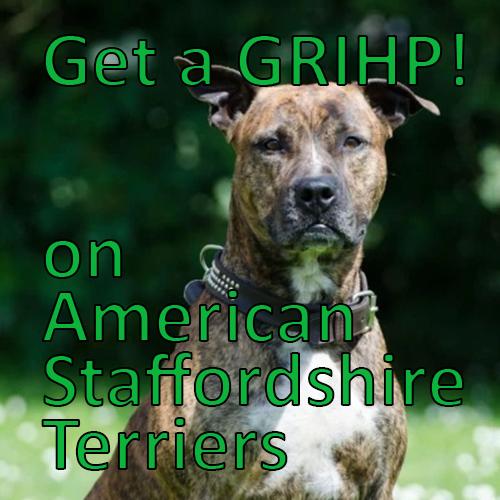
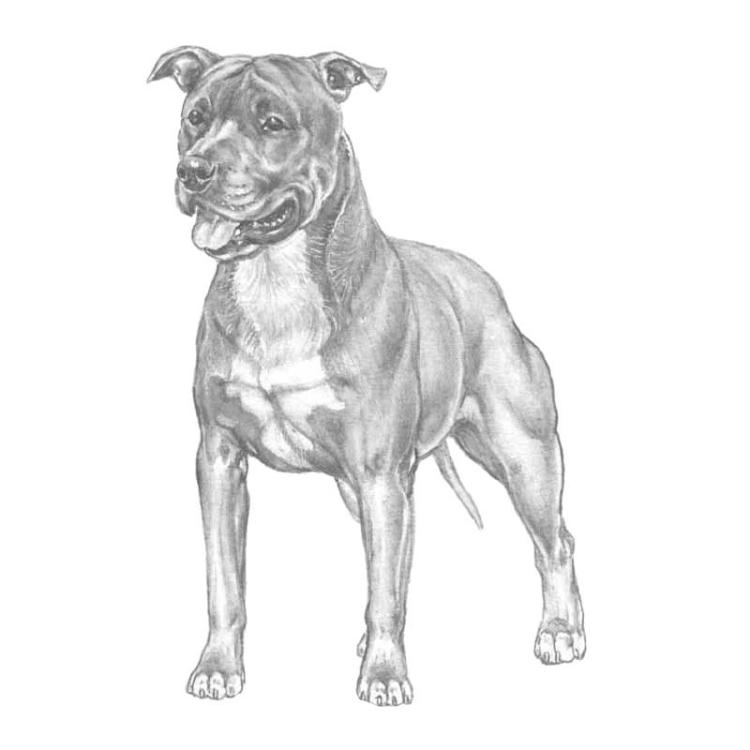
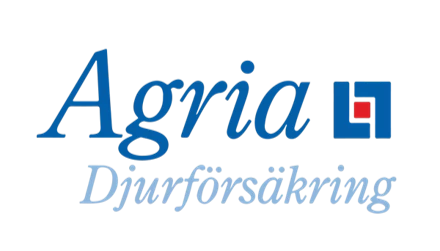
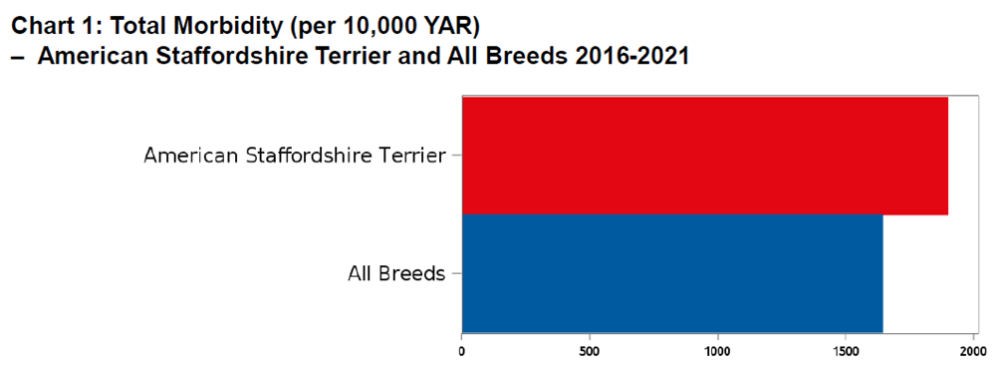
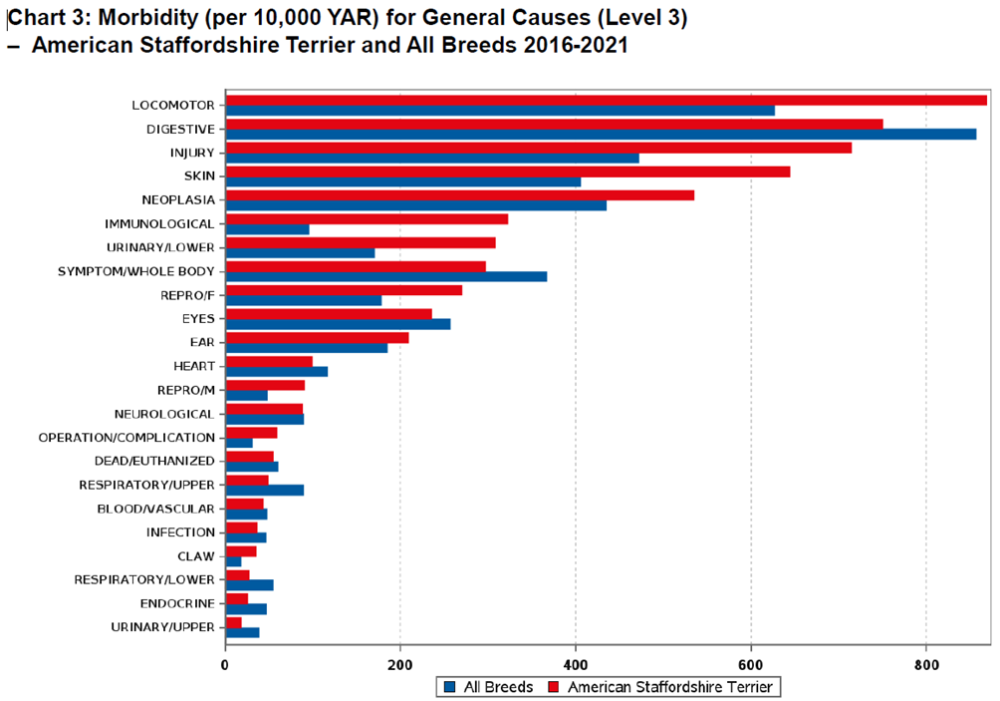
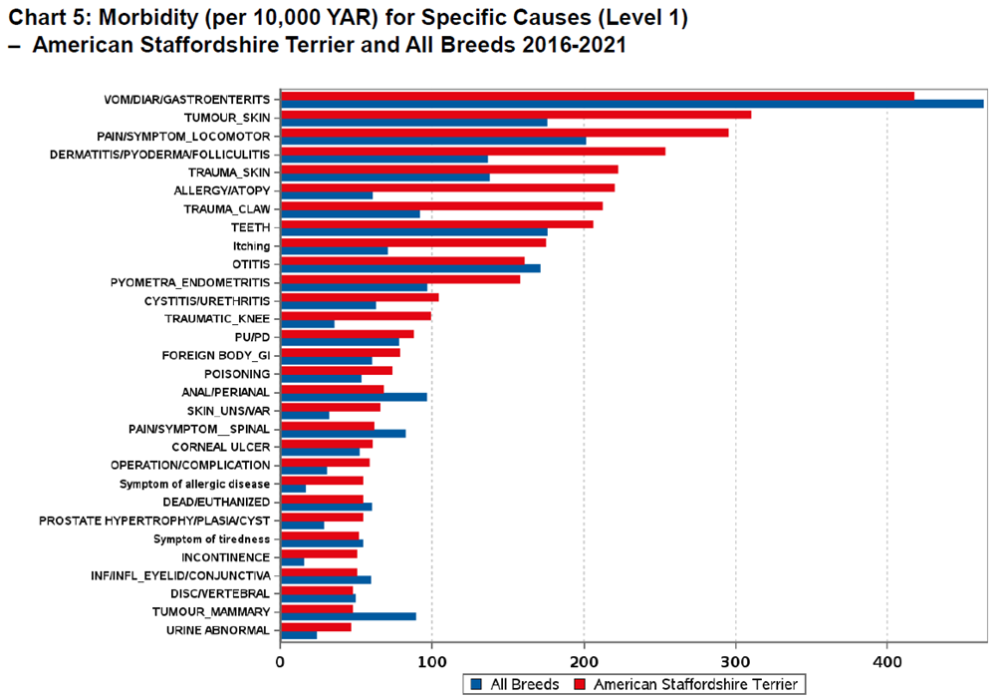
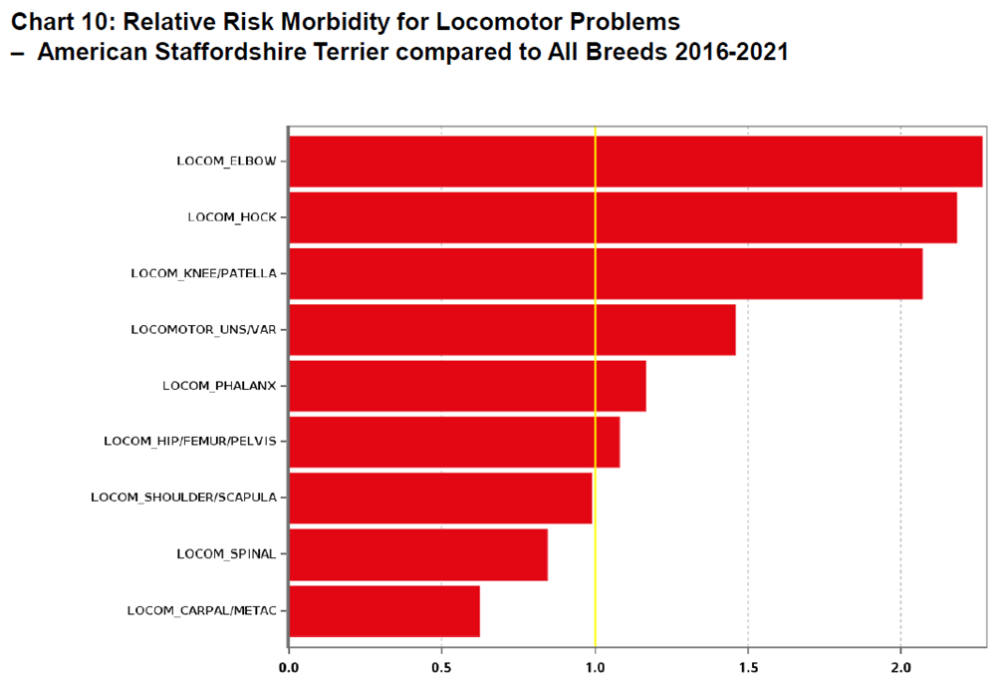
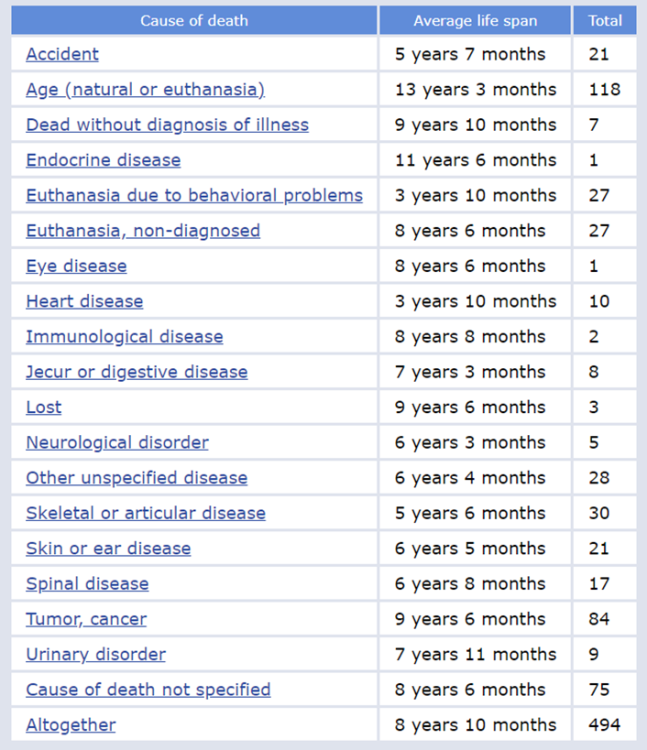

Recommended Comments
There are no comments to display.
Join the conversation
You can post now and register later. If you have an account, sign in now to post with your account.
Note: Your post will require moderator approval before it will be visible.